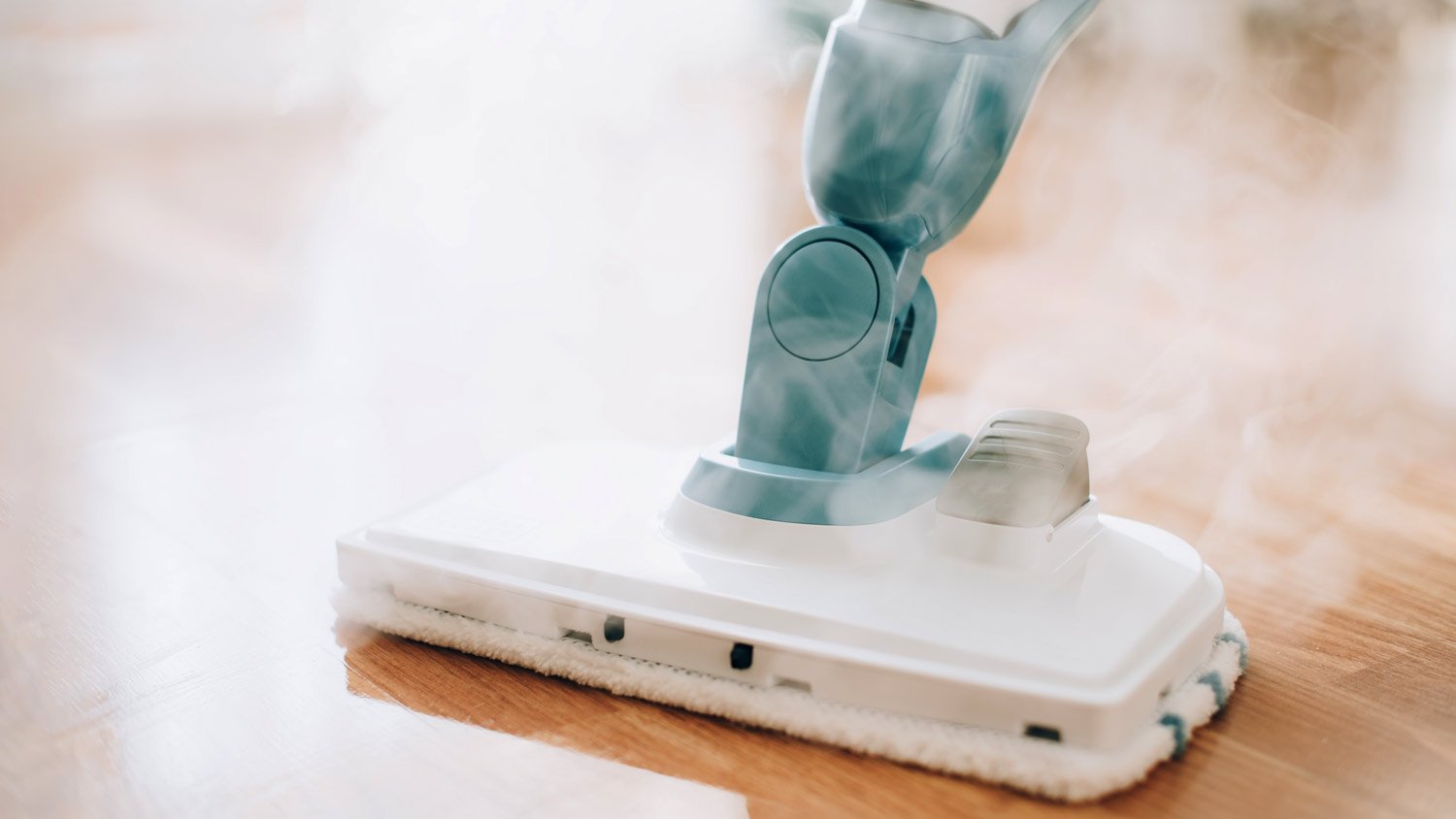
Garage clean-out costs vary considerably depending on the garage size, the waste type and amount, and how much work you do yourself.
Refresh your floors in minutes


Learning how to use a steam mop makes floor cleaning easier by skipping the dirty water bucket for a faster shine. Steam mops heat water into steam to loosen grime and sanitize surfaces without harsh chemicals. Plus, it dries quickly, leaving your floors clean and streak-free in minutes. Here's how to use a steam mop for sparkling results.
Once your floor is prepped and you have a steam mop in hand, follow these steps to get your floor sparkling.
Before you get the steam mop out, remove any dirt and debris from the floor using a broom or vacuum cleaner. If you skip this step, the steam can cause the dirt to become muddy, and the mop will spread that mud over the floors. Debris can also scratch wooden floors if not removed before steam mopping.
The exact directions for prepping your mop can vary depending on the manufacturer, so read the instruction manual to ensure you’re doing it right. Generally, you’ll attach the mop pads and fill the reservoir with water to prepare the mop for cleaning. Some manufacturers allow the use of floor cleaners—check your manual for specifics before adding anything but water to the reservoir. Then, switch the mop on and let it power up.
Before unleashing the steam mop over your entire home, test a small and inconspicuous area to ensure the mop won’t damage the surface. Your manual might specify different surface settings, so keep that in mind before testing it.
Once the mop is ready and you’re satisfied it won’t damage your floor, it’s time to get to work. Mop the floor in straight lines. Avoid leaving the mop in one place for too long, as too much heat in one spot can damage the floor. Steam mops are great for cleaning sticky floors, but you might need to pass over a particularly dirty spot several times before it’s spotless.
Start in the corner of the room and work backward to avoid leaving footprints on the damp spots. Change the mop pads when dirty to prevent unsightly streaks on your clean floor.
After you’ve finished mopping, let the floor air dry. Avoid walking on it until it’s completely dry, or you could leave footprints on the otherwise spotless surface.
Throw the dirty mop pads in the washing machine so they’re clean and ready for the next mopping session. Avoid using fabric softener or bleach on the pads. Some mop pads, like ones made of microfiber, should go in the dryer while others might need to hang dry. Check the manufacturer’s instructions.

Steam mops are a game changer—if you know how to use them. Here's how to make the most of that hot water magic.
While steam mopping is safe to use on most materials, some floor types require more caution than others. If you’re steam mopping on tile, be sure to use a microfiber pad to avoid scratching glazed surfaces and don’t linger too long in one spot to avoid dulling the finish.
For mopping on hardwood, it’s important that the wood is properly sealed, use the lowest steam setting, and use a microfiber cloth to wipe up any excess moisture.
String mops are best for heavy-duty floor cleaning, while flat mops are ideal for sprucing up flat surfaces such as tile, laminate, and vinyl flooring. Steam mops, on the other hand, can kill bacteria easily but should not be used on surfaces that can’t handle the heat. We’re looking at you, unsealed hardwood and laminate, and vinyl. Other mop types, such as spin and dust mops, have more all-purpose uses that can help maintain the cleanliness and quality of your floors.
While both traditional and steam mops have their benefits, steam mops tend to win the effectiveness race since heat kills more bacteria. While a traditional mop is better for quick cleanups and more floor types, a steam mop provides a deeper clean that sanitizes more effectively. However, if you’re worried about the effect a steam mop might have on your delicate floors, it’s probably best to stick to a traditional mop.
Using a steam mop is an easy task for many homeowners. However, if you have mobility concerns or don’t want to buy a steam mop, hiring a local cleaner to mop your floors while cleaning the rest of your house can be well worth the money. Hiring a professional house cleaner costs between $120 and $240, with many homeowners paying an average of around $170.
From average costs to expert advice, get all the answers you need to get your job done.

Garage clean-out costs vary considerably depending on the garage size, the waste type and amount, and how much work you do yourself.

Mattress cleaning cost depends on the number of mattresses being cleaned and the size of each. Use this guide to better understand mattress cleaning prices.

Cleanout cost may be one of your first thoughts when left in charge of an estate. We walk through factors to expect, the professional estate cleanout services cost, and ways to save.

A professional organizer can help you declutter your home effectively and keep it that way. Explore the numerous benefits of hiring a professional organizer.

Choosing the right cleaner is essential to keeping natural stone surfaces in good condition. Find out more about pH neutral cleaners for stone surfaces.

Construction can leave your home a mess. Use our post-construction cleaning checklist so you can enjoy your updated home free of dust and debris.